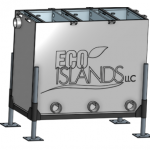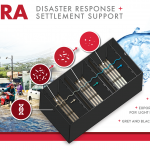#18: The Smart PermaCycler: Bio-Electro-Mechanical Feedback Loops
Integrate Electro-Mechanical and Biological Feedback Loops in your grow with the 1st Smart PermaCycler
Along with the Smart PermaCycler, there is some excellent work coming out of MIT and the private sector. The Personal Food Computer (OpenAg) and the FarmBot are both excellent examples of hardware and software coming together to provide for a need. The open source code and off the shelf parts from MIT are a true gift to DIY’ers. Though they aren’t cheap, they also aren’t all that expensive either. For a system that can handle partial atmospheric cycling and basic water/nutrient monitoring and regulation, 3-4k (US) isn’t all that much (early stages, the price will come down significantly).
There are plenty of command and control units online and in grow shops. The Titan and Spartan Series of grow room monitors are good pieces of equipment, but limited in capability. You get what you pay for. Temp, CO2, Humidity, EC, pH, and Lights Timer are all available. Increased complexity = increased cost.
You can get it all WiFi’ed and mobile and it is in part self regulating. Yes, there is an app for that. Hands on Plants are still critical to success, but monitor and control systems are as much an insurance policy/early warning system against catastrophe (lights on in night cycle, humidity too high/mold, heat fails, EC too high and screwing with osmosis and diffusion.) C&C’s certainly pay for themselves too, usually within a cycle for even more expensive units.
To command and control a Smart PermaCycler you need more probes, but for only a bit more cost than MIT’s PFC. Our goal is to have the first fully functional, automated Smart PermaCycler operating in a Portland Grow by the end of the year. (Looking at you, Portland R and D partners).
So what are the monitoring points and what are they monitoring? Will these same points and probes by used on Mars and the Moon? Absolutely. Are manual samples for specific water quality still needed? Yes, probes can’t be cheaply made to monitor everything in your water. You will need some water sampling equipment like the HachDr900 or the DR1900. That or get really friendly with a water lab tech. I use and love the DR1900. ROI in 1 cycle on that unit for pro grows. It’s a photo-spectrometer and does over 200 different test including All of your macro and micronutrients.
A Smart PermaCycler needs all of the basics plus a few extras:
Electronic Water Probes (Basic) Necessities: EH/TDS/Salinity, pH, Temp, Flow Rate
These probes are easy to come by, relatively inexpensive and absolutely necessary for healthy plant and wetland life.
EC/TDS/Salinity measure water’s conductivity but don’t tell you what solutes are present or concentrations. That could mean a TDS of 200ppm is a mix of healthy nutrients. Or, Na (sodium) from using too much pH up. That’s a big difference and will kill your plants and most higher order wetland life (fish and macro’s.
pH you have a good handle on, but knowing the types of acids and bases you are adding will effect your EC and should compliment your nutrients. Ca and Mg ions for H+ (acid, hydronium cation) and OH- (base, hydroxyl anion).
Temp in your water is very important. Two considerations. Microbes metabolize faster in warm water, so we dump the grow’s heat into the wetland through direct atmospheric injection. Higher water temp means lower DO. DO’s highest saturation point is as just above freezing at 12ppm. At 70 degrees F, the sweet spot for most microbial metabolism, DO is half (7ppm).
You have to increase flow, outside air provision, PAR, or plant biomass in the grow room to generate more O2 to satisfy BOD. Bbiological oxygen demand, or the O2 it takes to break down all of the waste plant mass fed into the permacycler which is converted back to water and CO2.
Flow rate is a huge determinant on available DO. The Smart PermaCycler has multiple, discrete gas exchanges (waterfalls that briskly mix air and water). In a sealed wetland, O2 is pulled from the grow room during the light cycle and turned to CO2 by the wetland. At night air is openly vented through both grow room and wetland to provide O2 and reduce CO2 diffusive back-pressure.
Electronic Water Probes (Mid) Level: ORP (oxidative/reductive probe), DO (dissolved oxygen).
The ORP is very inexpensive, and the DO can run up to $500 for the older models.
These two different probes measure the amount of oxygen, or other TEA’s, in your Smart PermaCycler. Above 2 milligrams/liter (2 parts per million) Dissolved Oxygen is needed to avoid stress in animal life. Where the probe is in relation to the loose fibre biomatrix makes a huge difference in available dissolved oxygen.
ORP, or Oxidative/Reductive Potential “is a measure of the tendency of a chemical speciesto acquire electrons and thereby be reduced. Reduction potential is measured in volts (V), or millivolts (mV).” In a lot of ways, this makes a wetland a potential battery. Want to burn off nitrogen/nitrate (you don’t really, but you can), let the PermaCycler go reduced. Same for sulfate, or any other oxidized species. This is really more a mine drainage reclamation parameter, but it tells you a lot and is a very inexpensive probe. It can mostly replace a DO probe, saving money and gaining specificity. But so can basic observation and your nose in most cases. Read the wetland like you read your plants.
I’ll go more into ORP and how it pertains to batteries and Winogradsky wetland electric generators later.
Electronic Water Probes (Advanced/Expensive) Level: DO (dissolved oxygen) again, ammonia (NH3)
A really good LED DO probe (yes, light emitting diode) can cost 2-3k, but require no pre-set chemical zero kits or diffuse probe tips and lasts for years between calibration.
The ammonia probes are expensive, though Arduino and Raspberry Pi boards are bringing the costs down. In a source water with lots of wetland matrix and plenty of available DO, ammonia is quickly converted to nitrite and nitrate, with ammonia oxidation being the slower reaction. (nitrite to nitrate is very fast and not a rate limiter.)
Atmospheric Probes (basic and mid level): Temp, Humidity, CO2
These are the grow rooms most important factors and are readily available. I won’t spend time on these, since they are well represented in current C&C units.
Atmospheric Probes (high end, safety backups): O2, CO (carbon monoxide), CH4, Hydrogen Sulfide
All of these probes are mid level expensive and used extensively in under ground mining. A nice wearable combo unit does CO, CH4, CO2, and O2 for about $700.
You have to aware that a PermaCycler with a high load of BOD can suck all of the O2 out of a room and replace it with dangerously high levels of CO2. Im am not a MD, but i recall anything over 4-5% CO2 has the potential of knocking you out cold. We aren’t naked mole rats! Picture breathing into a plastic bag. Your body is switching O2 for CO2 and some VOC through aerobic metabolism, same as a wetland. When CO2 concentrations get too high, you get drowsy and pass out. Remember, it isn’t lack of O2, you could have 23% O2 (normal is 21%) and 5% CO2, and still go down.
This isn’t a system where new outside CO2 is introduced by tank and regulator, or where methane is burned in the room, consuming O2 and CH4 and releasing CO2, water vapor, and heat. This is an aerobic chemo-heterotrophic system intra-conjoined with a photo-autotrophic system. One breathes for the other.
Carbon Monoxide, biogenic methane, and hydrogen sulfide are only concerns if the Smart PermaCycler goes really reductive (ORP probe of <+50mv to -450mv). These are more mining concerns, but each is dangerous. You can smell hydrogen sulfide (rotten egg smell) in PPB or parts per billion. It is so deadly we have have the same sensitivity as a dog’s nose for this stuff. CO is also dangerous, though in an aerobic wetland, not likely.
So, Feedback loops: Big take home is balance between SSBR (wetland) and photic reactor (grow room).
The grow room produces O2, which the wetland needs to break down waste plant mass, to provide CO2 back to the grow room, to increase plant productivity.
This is the Number 1 dynamic that makes the Smart PermaCycler the Next Agricultural Revolution and survival off planet possible. With the probes, sensors, command and control, and manual testing equipment detailed above, the Smart PermaCycler in a true sunlight embodiment will achieve carbon neutral or carbon negative plant production. Sound like the ocean /atmospheric CO2/O2 cycle?
The other loops are just the other mass and energy sinks that are mimicked by nature. Nitrogen is the most difficult.
After carbon, it is the second largest macro nutrient (Redfield Ratio again, I think thats my 4-5th link), But, with aquaponics and the appropriate fish/mollusk/amphibian biomass ratio to O2 producing plant mass, nitrogen is fully provided for from the atmosphere.
Phosphorous, potassium, iron, manganese, calcium, magnesium, sulfur, sodium, selenium, silica, boron, molybdenum…
are all miscible or partially water soluble and don’t volitize/gas off at STP (standard temp and pressure, not stone temple pilots). This means they stay in the water until they are oxidized, bio-sorbed by wetland biomass, or become your plants nutes.
The metals are one that must be monitored, as the wetland effect quickly drops iron, manganese and aluminum to non-detect levels, making them unavailable as nutrients for fertigation. The Smart PermaCycler is a Metal Removal Unit first and foremost used in acid mine drainage and the self regulating nature of the biofilm oxidizes metal anions. (pH and ORP dependent) This is overcome by stirring the wetland matrix (video of stirring an MRU) before fertigation. The floc caught in the mix water is sent to the plants where fungi chelate the metals for uptake by the plants.
P and K are always available as soluble phosphate and potassium and levels can climb quickly if you are indiscriminate with your nutrient additions. Same with sodium and chlorine, which are the reason RO is needed in some grows. Don’t put it in in the first place! Know Your Water!
Remember, what you add to your mix water stays in the wetland until its sequestered or used to grow biomass. If you dump in a lot of sulfur heavy nutrients, you’re pretty much screwed. Dilution and dumping biologically active nutrient water is a waste. Removing that much sulfur biologically from water requires an ORP of around -250mv. Everything in your aerobic wetland is now dead and you’re venting deadly hydrogen sulfide. Same with selenium. That one is really nasty too. Don’t add more than the plants can up-take in a quarter cycle. When it runs low, Then add more to the mix.
I don’t mean to scare you, but this is a potent system and if left un-monitored and maintained it can produce some dangerous stuff. The key here is knowing what your nutrient mix actually is. Don’t go by the branding bullshit from nutrient companies. Take your favorite nutrient, fresh, and take it to the lab (ask for duplicates, then bring them another set of dupes from another batch) or use you Hach DR900 or 1900 on it and find out Exactly what is in your nutes. If you are a serious grower you see the value in this. I won’t even want to start on your source water, but those tools will also do that.
If you run hydroponic, much of these concerns are alleviated. The mix concentrations are much lower and designed for limited re-circulation.
Humidity, Heat, and elevated O2 levels are sucked in by low psi, high flow compressors.
The heat in the air is immediately absorbed by the enormous specific heat capacity of the large tank of water (wetland in a box), humidity is added to the water in the cycler, and O2 is exchanged for CO2. A dehumidifier treats the wetlands exhaust, dumping now water temp, dry, high CO2 air into the bottom of the grow room where it is sucked upwards by heating and vacuum from the top of the room.
Enough for now, man that was a fast three hours. Coffee! If you got through that you are well on your way to being the 1st agricultural ecologist on Mars.
AND, You are ready to step your grow up to a Smart PermaCycler before the competition does.
Colin





